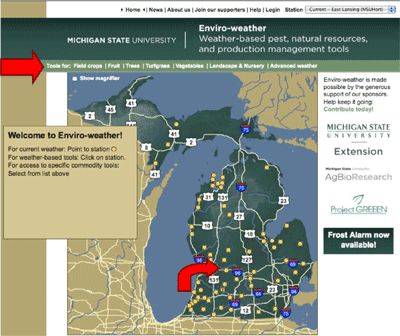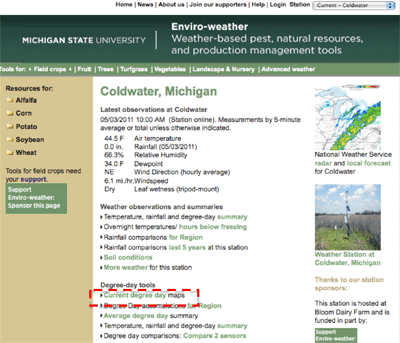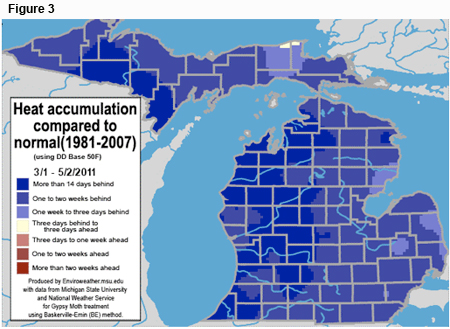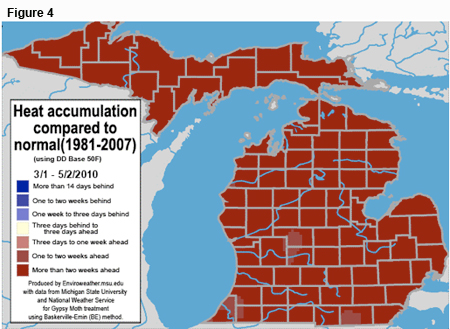Looking at growing degree days: Just how far behind normal are we?
Enviro-weather map shows degree-day deficits throughout Michigan.
Cool weather this spring has meant a slow start to the growing season. In Michigan, it’s not unusual to be ahead of or behind “normal” temperatures, but for planning field operations, it’s important that growers know the extent of the deviance. Crop growth and pest development (disease, insects, and weeds) depends directly on the amount of heat accumulated over a lower, base temperature. This heat accumulation is measured in units called “degree-days.” Growers can get a good idea of how the season is progressing by comparing accumulated degree-days to what is normally expected or to previous seasons.
MSU’s Enviro-weather calculates degree-days from data collected by the Enviro-weather stations throughout Michigan and other weather stations. Users can view a map of Michigan showing current degree-day accumulations (base 50) and maps showing the degree of departure from “normal.” To get to these maps from the Enviro-weather homepage, select a commodity (from the light green bar at the top of the page) or a station (by clicking on a yellow dot corresponding to a station location).

Then, click on “Current Degree-Day Maps” link, listed under the “Degree-Day Tools” heading.

You will be taken to the degree-day maps. The map at the top of the page shows current degree-day accumulations (base 50) throughout the state. If you scroll down the page, the second map will display departures from normal. Figure 3 shows what this map looks like as of May 2, 2011. Most of the state is 1 to 2 weeks behind normal degree-day accumulations. Contrast this with the same map for one year ago (May 2, 2010), when most of the state was 1 to 2 weeks ahead of normal (Figure 4). Compared with last year, field operations may be as much as two to three weeks behind.


As always, if you have questions, comments, or suggestions for Enviro-weather please contact me, Beth Bishop, at bishopb@msu.edu, eweather@msu.edu or 517 432-6520.



 Print
Print Email
Email


